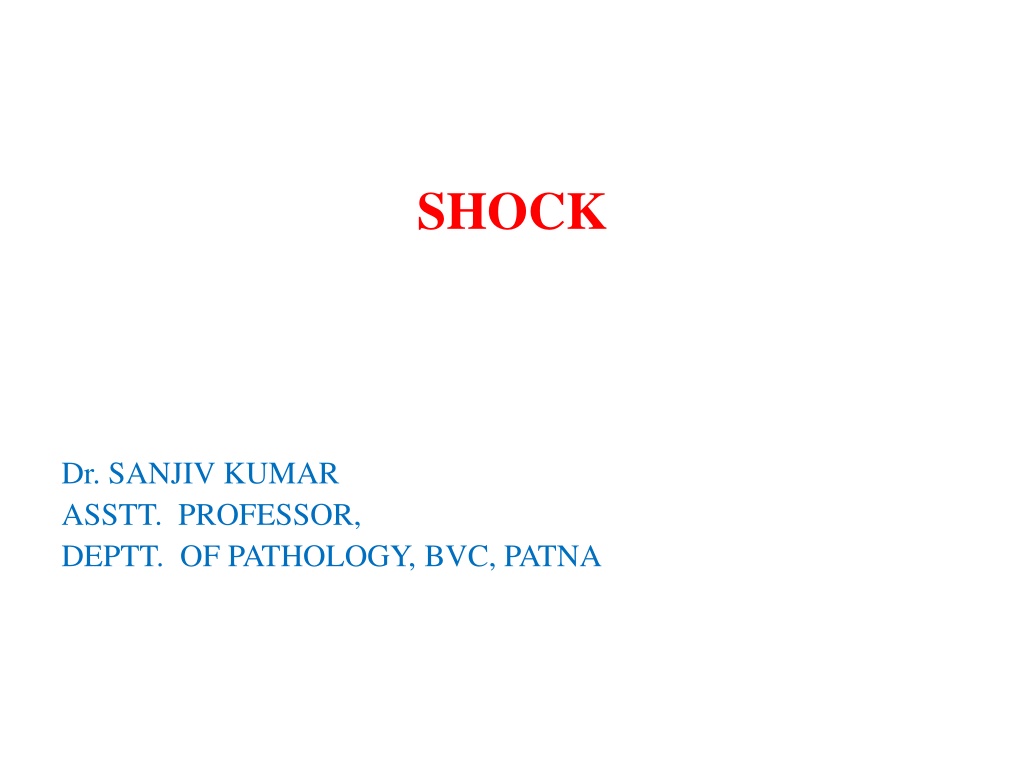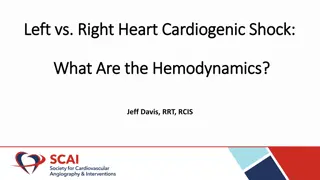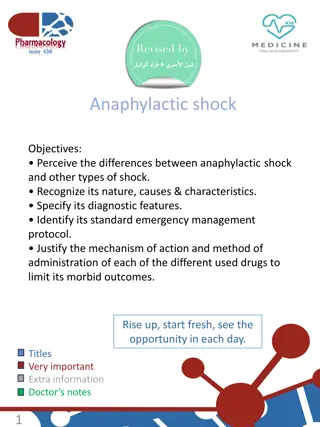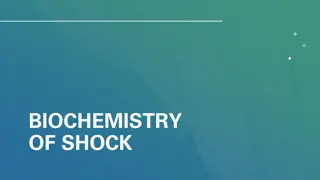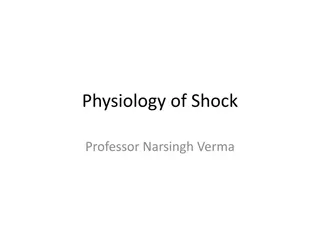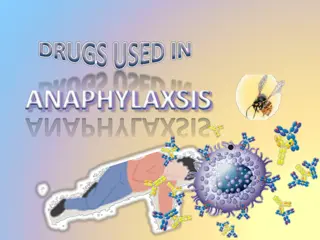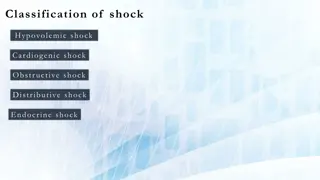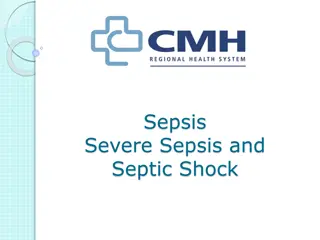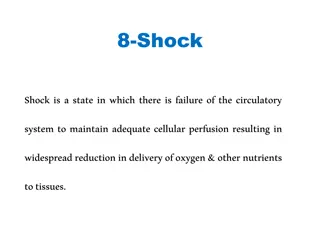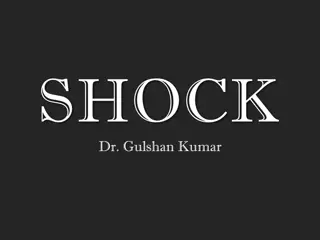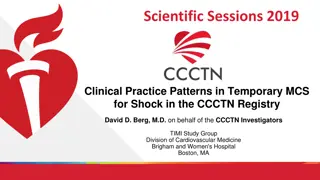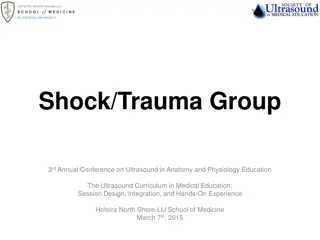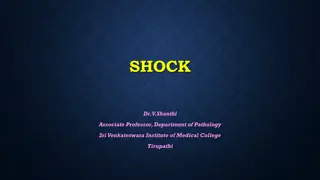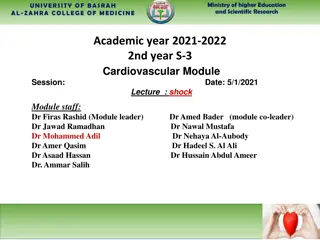Understanding Shock: Types, Mechanisms, and Causes by Dr. Sanjiv Kumar
Shock, a critical medical emergency, results from the failure of the circulatory system to adequately perfuse vital organs. This comprehensive overview delves into the different types of shock such as cardiogenic, hypovolemic, septic/endotoxic, neurogenic, and anaphylactic shock. Each type is explored in detail, covering their mechanisms, causes, and manifestations. Dr. Sanjiv Kumar, Assistant Professor at the Department of Pathology, BVC Patna, provides valuable insights into the diagnosis and management of shock conditions.
Download Presentation

Please find below an Image/Link to download the presentation.
The content on the website is provided AS IS for your information and personal use only. It may not be sold, licensed, or shared on other websites without obtaining consent from the author. Download presentation by click this link. If you encounter any issues during the download, it is possible that the publisher has removed the file from their server.
E N D
Presentation Transcript
SHOCK Dr. SANJIV KUMAR ASSTT. PROFESSOR, DEPTT. OF PATHOLOGY, BVC, PATNA
Definition Failure of the circulatory system to adequately perfuse vital organs. An emergency condition.
Types Cardiogenic shock Hypovolemic shock Septic/Endotoxic shock Neurogenic shock Anaphylactic shock
CARDIOGENIC SHOCK Results from cardiac pump failure Cardiac output= heart rate x stroke volume Cause: Myocarditis-Septicaemia or viral infection Myocardial degeneration-Vita E/Se def, infarcts Cardiac temponade-Haemopericardium Electrolyte imbalance-Hyperkalemia in uremic animals
Mechanism Inadequate cardiac output Hypotension Impaired tissue perfusion Cellular hypoxia
Hypovolemic Shock Sudden severe loss of blood volume Acute haemorrhage->1/4thto 1/3rd Loss of fluid: vomiting, diarrhoea etc. Increased vascular permeability Loss of intravascular fluid & proteins
Hypovolemic Shock Cardiogenic shock Myocarditis Cardiac temponade Internal fluid loss External fluid loss Endotoxaemia Burns Haemorrhage Diarrhoea Metabolic acidosis Increased vascular permeability Decreased blood volume Decreased venous return Decreased cardiac output Heart failure Decreased tissue perfusion Anaerobic glycolysis in muscles Endothelial damage Anoxic cell injury Renal failure
SEPTIC/ENDOTOXIC SHOCK Results from bacterial infection in which large quantities of endotoxins are released into circulation. Endotoxins are complex components of cell wall of gram -ve bacteria (LPS) Endotoxins bind to serum proteins Resulting complex bind to Macrophage/monocyte TNF alpha, IL-1 secreted into circulation Marked capillary dilation Severe pooling of venocapillary blood Decreased cardiac venous return Cardiovascular collapse
Anaphylactic shock Systemic manifestation of an acute allergic response Exposure to allergens Activation of mast cells or other effector cells Release of histamine and other chemical mediators Marked venocapillary dilation Increased vascular permeability Loss of intravascular fluid Decreased cardiac venous return Cardiovascular collapse
NEUROGENIC SHOCK Severe trauma, anaesthetic accident, spinal cord injury. There is disruption of vasomotor control, loss of vascular tone, vasodilation and peripheral pooling of blood.
CLINICAL CONSEQUENCES OF SHOCK Decreased tissue perfusion causes anoxic injury Anoxic injury to endothelial cells Insufficient renal & muscularperfusion Increased vascular permeability metabolic acidosis Loss of intravascular fluid Suppress cardiac output Insufficient myocardial perfusion Anoxic injury to myocytes Decreased cardiac output
BODY RESPONSE TO SHOCK Increase in heart rate and contractibility Increased blood pressure through vasoconstriction Conserve body water
